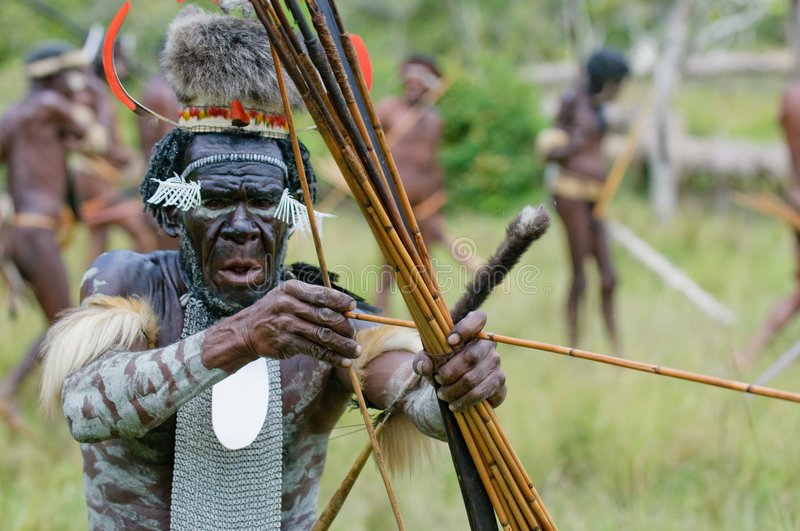Papua or Irian Jaya
Naming
Geography
The province’s largest river is the Mamberamo, sometimes called the “Amazon of Papua”, which winds through the northern part of the province. The result is a large area of lakes and rivers known as the Lakes Plains region. The famous Baliem Valley, home of the Dani people is a tableland 1600 m above sea level in the midst of the central mountain range; Puncak Jaya, sometimes known by its former Dutch name Carstensz Pyramid, is a mist covered limestone mountain peak 4884 m above sea level. It is the highest peak of Oceania.
Ethnic Groups
The following are some of the most well-known ethnic groups of Papua: Amungme, Asmat, Bauzi, Dani, Kamoro, Kombai, Korowai, Mee, Sentani, Yali, Yei

Papuan dance from Yapen

Yali Warrior

Sentani Dance
There are elementary schools in each village. About 10-30% of children continue in middle school. Very few go to high school. The nearest high school is in Merauke city. They live primarily by hunting, fishing, and gardening short and long term crops in the lowlands. The Yei diet mainly consists of rice, vegetables, fish and roasted sago. With their land at an altitude of less than 100 meters above sea level, the Yei people can best be accessed by vehicle on the road from Merauke or by motorized canoe up the Maro River. There is no airstrip or airplane access other than float plane which is currently available from Merauke through MAF by about a 15 minute flight to Toray. The Poo and Bupul villages have a clinic but people still use traditional medicines. There is very little infrastructure in the area: no telephones or toilets. At night electricity is run from a generator. There are (SSB’s) Single side-band radios in Bupul, Tanas, Poo, and Erambu villages, mainly used by the police and military force. Most villages get their drinking water from the Maro River, but some get it from wells or by collecting rain.
Demographics
The population of Papua province has been growing fast (2.9 children per woman fertility rate), from 1.9 million in the 2000 Indonesia Census to 2.9 million in the 2010 Census Since the early 1990s Papua has had the highest population growth rate of all Indonesian provinces at over 3% annually. This is partly a result of high birth rates, but mainly due to migration from other parts of Indonesia. While indigenous Papuans formed the near-totality of the population in 1961, they are now roughly 50% of the population,[citation needed] the other half being composed of non-Papuan migrants coming from other parts of Indonesia. An overwhelming percentage of these migrants came as part of a government-sponsored transmigration program.
According to the 2010 census, 83.15% of the Papuans identified themselves as Christian with 65.48% being Protestant and 17.67% being Roman Catholic. 15.89% of the population was Muslim and less than 1% were Buddhist or Hindu. There is also substantial practice of animism by Papuans.
The densest population center, other than the large coastal cities that house Indonesian bureaucratic and commercial apparatus, is located in and around the town of Wamena in the Palim (a.k.a. Baliem) Valley of the Central Highlands. The ‘extreme democracy’ and ecological stewardship of the highlands Papuan society is documented by Jared Diamond in the book Collapse: How Societies Choose to Fail or Succeed.
